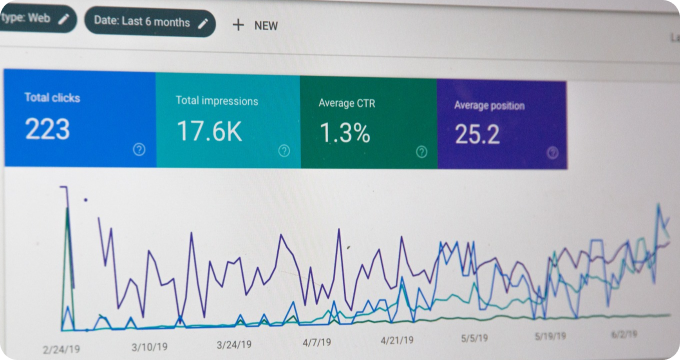8 Things I Wish I'd Known About Contact Center Quality Assurance Software Before Implementing It
- December 09, 2023
- 3 minutes
In the realm of contact center operations, the implementation of Quality Assurance (QA) software carries a weight similar to the advent of the printing press in the 15th century, or the introduction of the internet in the late 20th. It is transformative, boosting operational efficiency, enhancing customer satisfaction and driving revenue growth. However, the path to successful software implementation is not without its challenges and nuances. Through this lens, let us explore eight salient insights that I wish I'd known prior to embarking on this journey.
Firstly, the fundamental purpose of Contact Center Quality Assurance software is to monitor interactions between customer service representatives and customers, identifying areas for improvement through systematic and consistent evaluation. However, while the software's capabilities may seem omnipotent, it is not a panacea. It is a tool, and like all tools, is only as good as its user. Utilizing it effectively requires a deep understanding of its capabilities and an alignment with your specific operational needs.
Secondly, not all QA software is created equal. The software landscape is a complex tableau, with a broad spectrum of offerings each with its own unique features, benefits, and limitations. Some are designed with focus on automation, while others specialize in analytics or omnichannel support. Understanding these differences is crucial to selecting the right tool for your needs. Consider it akin to selecting a theorem in mathematics, where a wrong choice could lead to a flawed solution.
Thirdly, the implementation of QA software isn't a one-time event, but rather a dynamic, ongoing process. This echoes a principle in economics known as 'Dynamic Efficiency', which stresses the importance of continual adaptation and improvement over time. It is necessary to regularly evaluate and adjust your software settings and usage to remain aligned with changing needs and goals.
The fourth insight pertains to the importance of training. QA software, with its myriad of features and functions, is complex and can be daunting to the uninitiated. Comprehensive training, tailored to the roles and responsibilities of the user, is an absolute necessity. It is akin to the laws of physics: if you don't understand the principles, you can't make it work effectively.
Fifthly, it is essential to recognize that QA software, while powerful, cannot replace human judgement. In the social science context, this could be likened to Emile Durkheim's concept of 'collective conscience' – the shared morals and beliefs in a society. While the software can flag potential issues and trends, it’s the human team that brings contextual understanding and makes the ultimate decision.
The sixth insight revolves around the integration capabilities of the software. In a world increasingly defined by data, the ability to seamlessly integrate with other systems and data sources can turbocharge your QA efforts. It becomes a mathematical equation, where each additional data point exponentially increases the software's effectiveness.
Next, it is important to understand that implementing QA software necessitates an organizational culture shift. Like the rediscovery of Aristotelian philosophy during the Renaissance, it requires a complete shift in thinking, a departure from traditional ways of working. It involves fostering a culture of transparency, accountability and continuous improvement, underpinned by the insights and analytics delivered by the software.
The final insight is the importance of customer feedback in the QA process. Harnessing the power of QA software to analyze and understand customer feedback can be likened to the scientific method of hypothesis testing. It involves observing patterns, formulating hypotheses, and testing them against data. This iterative process helps build a customer-centric organization that continually adapts and improves based on customer needs and feedback.
In conclusion, the implementation of Contact Center Quality Assurance software is a complex and nuanced process that can yield transformative results. It is an endeavor steeped in economics, social sciences, mathematics, and more. It is an exercise in understanding and leveraging advanced technology, fostering culture change, and above all, maintaining a relentless focus on the customer. Despite the challenges, the potential rewards make it a journey worth embarking on. Remember, not every aspect of the software needs to be deployed immediately. As Leonardo da Vinci once said, "Simplicity is the ultimate sophistication."
Learn More
Unleash the full potential of your contact center by diving deeper into our enlightening blog posts about quality assurance software. For an unbiased, comprehensive view, they are encouraged to explore our meticulously curated rankings of the Best Contact Center Quality Assurance Software.
Popular Posts
-
 Contact Center Quality Assurance Software Industry Report: Unveiling Key Findings and Crucial Insights
Contact Center Quality Assurance Software Industry Report: Unveiling Key Findings and Crucial Insights
-
 How to Budget Effectively for Contact Center Quality Assurance Software
How to Budget Effectively for Contact Center Quality Assurance Software
-
 8 Things I Wish I'd Known About Contact Center Quality Assurance Software Before Implementing It
8 Things I Wish I'd Known About Contact Center Quality Assurance Software Before Implementing It
-
 What is Contact Center Quality Assurance Software and How Does it Work?
What is Contact Center Quality Assurance Software and How Does it Work?
-
 Ask These Questions to a Contact Center Quality Assurance Software Provider to Choose the Right One for Your Business
Ask These Questions to a Contact Center Quality Assurance Software Provider to Choose the Right One for Your Business






